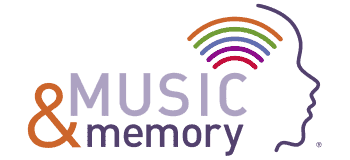
The other day, Suzanne Godfrey was playing music for her 19-year-old daughter when Brown Eyed Girl came on. Suzanne began singing the lyrics. “Hey, Abigail,” she said, “you’re my brown-eyed girl!” Abigail smiled and looked at her mother. It was a good day.
Abigail has Heller’s Syndrome, also known as Childhood Disintegrative Disorder, a rare condition on the autism spectrum with no known cure that causes severe loss of social, communication and other skills, mimicking Alzheimer’s.
Up until the sixth grade, Abigail was like any other preteen, with no signs of any issues with verbal, motor or social skills. She won the sixth grade spelling bee. She wanted to be a fashion designer. Then she became forgetful. She began acting out, sometimes aggressively. She tried to chase after the school bus, unaware of the risk of getting hit by traffic. She couldn’t understand what was happening to her ability to communicate or why she was losing control of her bladder and bowels.
Searching for Answers
Suzanne struggled to find answers from world renowned experts. She moved Abigail from their home in Florida back to Utah, where Suzanne’s parents and extended family live, for support. She played music for her daughter, which helped Abigail to relax and gave her joy, singing along.
She enrolled her in the high school Suzanne herself had attended, Sky View High, in Smithfield, about an hour-and-half north of Salt Lake City. Sky View is a school with a culture of inclusion—a place where teens make sure that their classmates with special needs have dates for the homecoming dance, where kids walking down the halls will high-five other kids as they negotiate through the crowd in wheelchairs.
Surrounded by loving family and friends, Abigail stabilized. Suzanne found much needed support in her Mormon religious community, The Church of Jesus Christ of Latter Day Saints. And she began teaching at another high school, working with troubled teens. She also coached some aspiring musicians as they launched their careers.
Inspired by MUSIC & MEMORY® to Seek Music Therapy
Then, about a year ago, Suzanne heard about a screening of Alive Inside: The Story of Music & Memory, from a girlfriend who knew Abigail. “I was very moved by the documentary, to see how powerful music was for Alzheimer’s patients,” says Suzanne. She was fascinated to learn of Utah’s initiative to introduce Music & Memory to nursing homes statewide. She was also inspired to take Abigail to a music therapist, for additional help.
But she didn’t stop there. “I thought people should know about Music & Memory,” she says. “It’s such a great way to help.” And that is how Suzanne got the idea, inspired by the ALS Ice Bucket Challenge last winter, to create the Alive Inside Challenge: Make a video of your favorite song, post it to Facebook or YouTube and raise awareness about Music & Memory. Make a contribution, if you can.
The Alive Inside Challenge
She brought the idea to three area high schools. At Sky View, Suzanne approached Karen Teuscher, a music teacher and choir director, who knew Abigail from times when her choir would sing a Christmas program for the kids in the school’s special needs classes.
“Suzanne came in and told me about the challenge,” recalls Karen. “I thought it sounded like fun, and I wanted to support Abby. I told my classes that I’d do a video if they did.” Karen made a playful recording of her own favorite song, Ain’t No Mountain High Enough. The kids loved it.
“We talked to the kids about what it was for, how the money raised would go for iPods and acquiring meaningful music for people who needed it. They all thought it was a great idea,” says Karen. One class made their own recording of a shared favorite and challenged others to follow suit. The math teachers did a rap song. The challenge took off, and Sky View won the competition. “We couldn’t let the other schools in the valley win!” says Karen.
Suzanne presented Karen with gift basket, in thanks. She hopes to do another challenge this winter, around Christmas, to continue raising awareness and funds for Music & Memory. She has also inspired one of her performing artist clients, Mari Desius, to promote the personalized music program in area nursing homes.
A Beautiful Heartbreak
Although Abigail can no longer sing along with the music her mother plays, favorite songs continue to provide an important bridge in their relationship—a way to stay connected with a meaningful look and a smile. Music also helps Suzanne to cope with the many parenting challenges she faces each day.
“Especially in the beginning, when we were still in Florida, I felt very alone,” says Suzanne. Listening to Hilary Weeks sing A Beautiful Heartbreak gave her courage. “That particular song is very powerful,” she says. “We go through these really difficult trials, but they can be a beautiful heartbreak. I want to make sure that Abigail’s life is not in vain.
“Music is so powerful. Music & Memory is so important, a way for an individual to have their music, which can be so healing. When I heard about it, I wanted to do what I could to help.”
Founded in 2010, MUSIC & MEMORY® is a non-profit organization that brings personalized music into the lives of the elderly or infirm through digital music technology, vastly improving quality of life.
